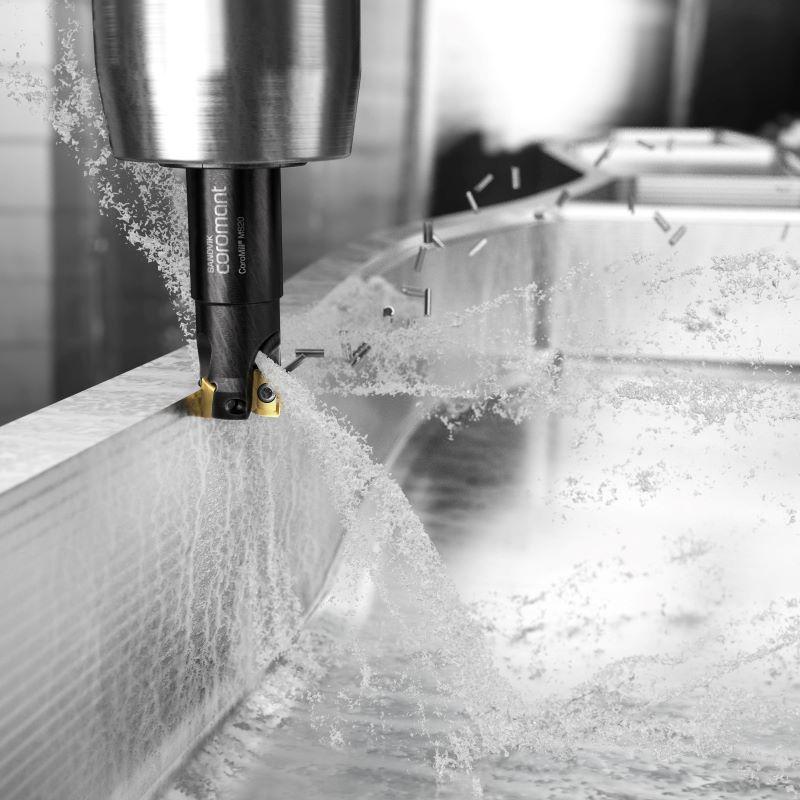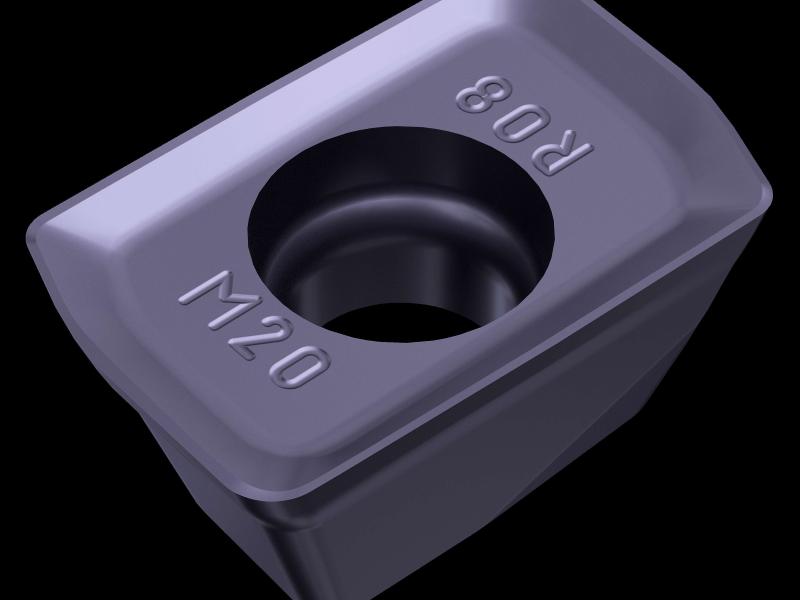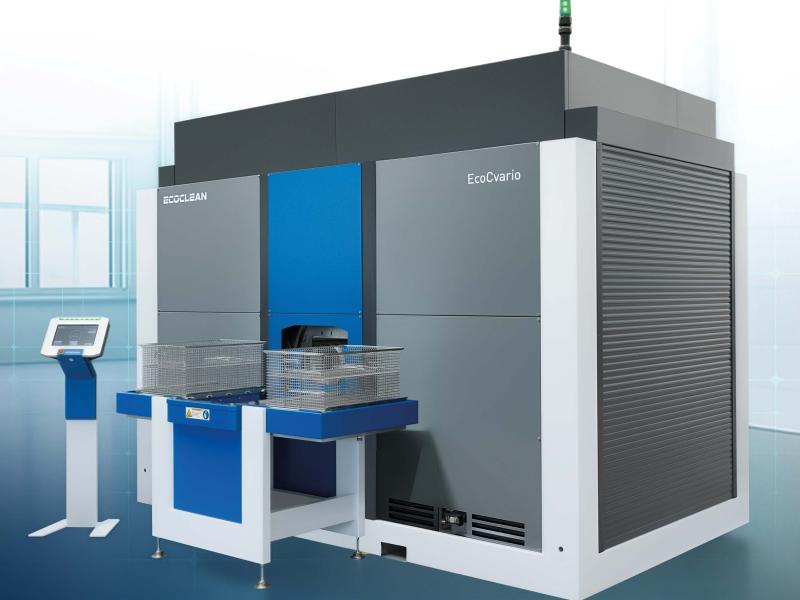Milling is a fundamental process in the metalworking industry, shaping everything from complex aerospace components to critical automotive parts. But despite its ubiquity, successful milling hinges on some careful considerations. How can manufacturers consistently achieve high accuracy, impeccable surface finishes and cost-effective results? Barry Cahoon, Product Solution Specialist Rotating Indexable – Europe at leader in metal cutting and manufacturing solutions Sandvik Coromant, offers his advice.
Achieving optimal milling results necessitates selecting cutting tools specifically engineered to meet precise machining requirements. This must take into account factors such as cutting geometry, material hardness and machining strategies. Whether the task involves high-precision shoulder milling, high-speed face milling or complex multi-axis contouring, the performance of the milling tool directly influences the efficiency and accuracy of the entire process.
What defines successful milling?
For any milling operation to be considered successful, precision is paramount. Achieving tight dimensional tolerances and geometric accuracy is essential for parts to function as intended.
Surface finish is another critical factor. A smooth, clean finish is not just an aesthetic requirement but often a functional one. In industries such as aerospace, where components such as turbine blades or compressor casings must meet stringent performance standards, even slight deviations in surface quality can lead to major problems. Efficiency also comes into play. Milling processes need to maximise material removal rates while keeping machining time to a minimum, all without compromising quality.
Then there’s the question of tool life. Manufacturers are constantly seeking ways to extend tool life, which in turn reduces tool changes, minimises downtime and ultimately cuts costs. However, tool life is closely linked to factors like chip control and cutting forces. Poor chip evacuation or excessive forces can cause rapid tool wear, leading to reduced efficiency and suboptimal results.
Tool selection: the key to milling success
With so many variables at play, selecting the right tool is often the biggest challenge. Different operations — such as shoulder milling, face milling or even high-feed milling — demand tools with specific geometries and cutting capabilities.
Accuracy and precision are the foundation of every milling process. From creating flat surfaces to machining 90-degree shoulders or complex contours, precision is non-negotiable. Proper tool path control, optimised cutting parameters and stable machine dynamics are all essential to ensure that dimensional tolerances are met. Tools like CoroMill MS60 deliver reliable performance, particularly for shoulder milling, thanks to their true 90-degree shoulder capability.
Efficiency and cost-effectiveness are key considerations in any manufacturing environment. Time saved on machining processes translates directly to reduced costs, making it essential to minimise cycle times without sacrificing quality. In this regard, CoroMill MH20, specifically designed for lightweight milling, offers excellent performance in operations where high-speed material removal is required. Its unique insert design reduces cutting forces, allowing for faster feed rates while maintaining tool stability, particularly in deep cavity and pocketing applications. This not only increases machining speed but also extends tool life, reducing the need for frequent tool changes and lowering overall production costs.
Chip control and cutting forces are often underestimated but have a profound impact on the milling process. Efficient chip evacuation is crucial for preventing heat buildup and ensuring a clean cut, which is especially important in applications involving deep cavities or pockets. Insufficient chip control can cause chips to re-cut, leading to poor surface finish and faster tool wear. Modern tool geometries, like those found in high-performance milling solutions, are designed to optimise chip flow, reducing the risk of clogging and improving overall tool longevity. CoroMill MF80 offers smooth chip flow and minimised cutting forces, making it highly reliable for both roughing and finishing operations. All while its ability to handle a wide range of materials and machining conditions enhances versatility and productivity across various applications.
Finally, when selecting tools for demanding materials such as ISO M and ISO S, precision and reliability are non-negotiable. CoroMill MS20, Sandvik Coromant’s new 90-degree shoulder milling solution, delivers exceptional edge-line security and dimensional accuracy. This ensures high productivity and consistent results, even in challenging applications such as aerospace and oil and gas.
Successful milling hinges on a deep understanding of the interplay between tool design, material properties and machining parameters. By carefully selecting tools that are purpose-built for the task at hand — whether that’s shoulder milling with high precision or high-speed face milling for rapid material removal —manufacturers can achieve their goals of improved productivity, lower costs and exceptional part quality. The balance between precision, efficiency, tool life and chip control is what ultimately defines a successful milling operation.
For more information visit www.sandvik.coromant.com






